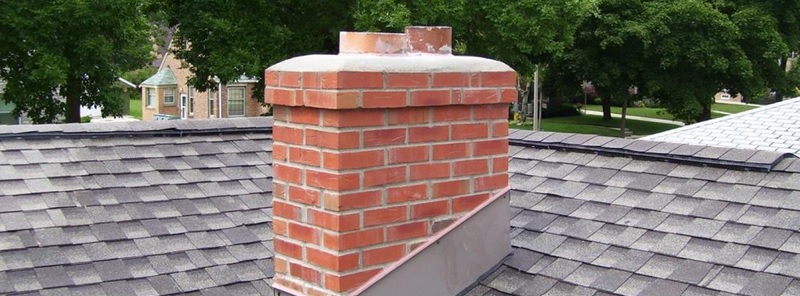
Chimneys are a vital component of many homes, providing ventilation for fireplaces, wood stoves, and heating systems. At the top of most masonry chimneys, you’ll find a critical structure called the chimney crown, also known as the chimney cap or chimney wash. The chimney crown plays a crucial role in protecting the chimney and the rest of the home from water damage and structural deterioration. Over time, however, chimney crowns can deteriorate due to exposure to the elements and require repair or replacement. In this 1000-word guide, we will delve into the importance of chimney crowns, the signs of damage, and the process of repair and replacement.
The Importance of Chimney Crowns
Chimney crowns are often overlooked, but they serve essential functions in maintaining the integrity of your chimney and preventing costly damage to your home. Here are the primary roles of a chimney crown:
1. Water Diversion: One of the most critical functions of a chimney crown is to divert water away from the chimney structure. Without a proper crown, water can penetrate the masonry, causing various issues such as spalling (chipping and flaking), cracks, and efflorescence (white, powdery deposits).
2. Weather Protection: The crown acts as a shield against the elements, including rain, snow, ice, and wind. It helps prevent moisture from infiltrating the chimney, which can cause structural damage and impact the performance of the fireplace or heating system.
3. Wildlife and Debris Barrier: A well-constructed chimney crown also keeps out birds, animals, and debris, preventing nesting, blockages, and damage. This is especially important for maintaining the safety and functionality of your chimney.
4. Increased Longevity: Properly designed and maintained chimney crowns can significantly extend the lifespan of your chimney. By preventing water damage and structural deterioration, they ensure that your chimney remains in good condition for many years.
Signs of Chimney Crown Damage
Chimney crowns are typically constructed from concrete, mortar, or other masonry materials. Over time, they can deteriorate due to the harsh effects of weather and temperature fluctuations. Here are common signs of chimney crown damage:
1. Cracks: Visible cracks on the surface of the crown are a common sign of deterioration. These cracks allow water to penetrate the chimney structure, potentially leading to further damage.
2. Erosion: Over time, the crown’s surface may erode, especially if it was not adequately constructed with durable materials. Eroded crowns are less effective at diverting water and protecting the chimney.
3. Separation from Flue Tiles: The crown should be securely bonded to the top row of flue tiles or masonry. If you notice any separation or gaps, it’s a sign that the crown is not doing its job effectively.
4. Absence or Insufficient Overhang: A proper chimney crown should have an overhang that extends beyond the edges of the masonry structure. If there’s no overhang or it’s too small, water can easily run down the sides of the chimney.
5. Visible Damage to Flue Tiles: Damaged flue tiles, such as cracks or spalling, can indicate that water has been infiltrating the chimney. This may be a sign of a failing crown.
6. Water Stains and Leaks: Water stains on the interior of your home, especially near the fireplace or chimney, are clear signs of water intrusion. Leaks can occur when the crown is no longer effective in diverting water away from the structure.
7. Efflorescence: Efflorescence appears as white, powdery deposits on the exterior of the chimney. It is caused by moisture infiltrating the masonry and carrying minerals to the surface. This is often an indicator of water-related issues.
8. Vegetation Growth: If you notice vegetation, such as moss or plants, growing on the chimney crown, it may be a sign that water is pooling and providing a suitable environment for plant growth.
The Chimney Crown Repair and Replacement Process
If you suspect that your chimney crown is damaged or deteriorating, it’s essential to address the issue promptly to prevent further damage to your chimney and home. The process of chimney crown repair or replacement typically involves the following steps:
1. Inspection:
The first step is to conduct a thorough inspection of the chimney crown. This inspection assesses the extent of damage and determines whether repair or replacement is necessary. A professional chimney technician can provide an accurate assessment.
2. Repair or Replacement Decision:
Based on the inspection results, the technician will recommend whether the crown can be repaired or if a complete replacement is necessary. The decision depends on the severity of the damage and the crown’s structural integrity.
**3. Repair:
If the chimney crown can be repaired, the technician will follow these steps:
a. Cleaning: The damaged crown is cleaned to remove debris, dirt, and any loose or deteriorated mortar or concrete.
b. Patching: Small cracks and holes can often be patched with a specially formulated crown repair mortar. This mortar is designed to adhere to the existing crown and withstand exposure to the elements.
c. Sealant Application: After the patching is complete, a water-resistant sealant is applied to the surface of the crown. This sealant helps protect the crown from future water intrusion and extends its lifespan.
d. Overhang Enhancement: If the crown’s overhang is insufficient, it can be extended to ensure better water diversion.
4. Replacement:
When the chimney crown is severely damaged or its structural integrity is compromised, a full replacement is necessary. The replacement process involves the following steps:
a. Removal: The existing damaged crown is carefully removed, exposing the top row of flue tiles or masonry.
b. Preparation: The exposed flue tiles or masonry are cleaned and inspected for any signs of damage. Any damaged flue tiles are replaced.
c. Form Construction: A wooden form is constructed to create the mold for the new chimney crown. The form is designed to match the desired overhang and shape of the crown.
d. New Crown Construction: Fresh mortar or concrete is mixed and poured into the form to create the new chimney crown. The crown is carefully shaped to achieve the desired overhang and water diversion properties.
e. Curing and Sealing: The new chimney crown is allowed to cure and harden. Once cured, a water-resistant sealant is applied to the surface to enhance its protective properties.
f. Inspection: The completed crown is inspected to ensure it meets quality standards and specifications.
g. Water Diversion Testing: To confirm the effectiveness of the new crown, water diversion tests may be conducted to assess how water flows away from the chimney.
5. Regular Maintenance:
After chimney crown repair or replacement, it’s essential to maintain the crown to ensure its longevity and effectiveness. Regular inspections and resealing can help prevent future damage and water intrusion.
Conclusion
Chimney crowns are a vital component of masonry chimneys, serving to protect the structure from water damage, weather elements, and unwanted intruders. Over time, chimney crowns can deteriorate, leading to issues like water leaks, spalling, and damage to the chimney’s interior. Recognizing the signs of chimney crown damage and addressing them promptly through repair or replacement is essential for maintaining the integrity and longevity



